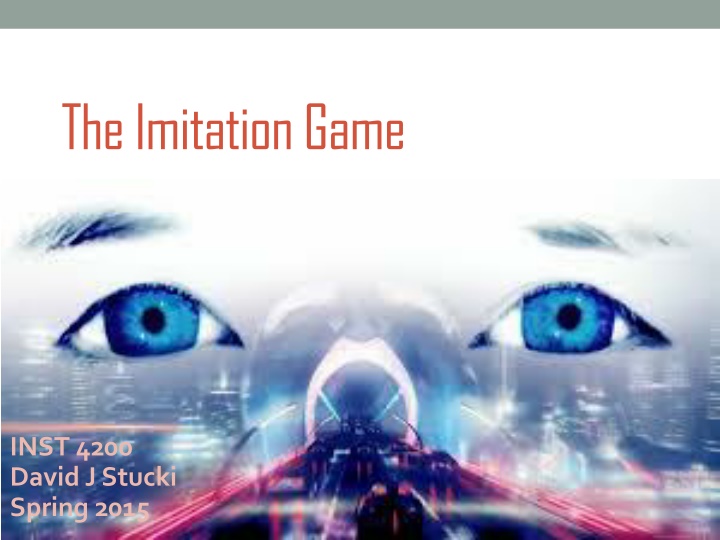
Reflections on the Turing Test and Beyond
Explore the evolution of machine intelligence through reflections on the Turing Test, Chinese Room argument, Hugh Loebner & Beyond, and insights from "The Most Human Human."
Download Presentation

Please find below an Image/Link to download the presentation.
The content on the website is provided AS IS for your information and personal use only. It may not be sold, licensed, or shared on other websites without obtaining consent from the author. If you encounter any issues during the download, it is possible that the publisher has removed the file from their server.
You are allowed to download the files provided on this website for personal or commercial use, subject to the condition that they are used lawfully. All files are the property of their respective owners.
The content on the website is provided AS IS for your information and personal use only. It may not be sold, licensed, or shared on other websites without obtaining consent from the author.
E N D
Presentation Transcript
The Imitation Game INST 4200 David J Stucki Spring 2015
What is the Turing Test? Activity 1 Reflections I believe that in about fifty years time it will be possible to programme computers, with a storage capacity of about 109, to make them play the imitation game so well that an average interrogator will not have more than 70 per cent chance of making the right identification after five minutes of questioning. Alan Turing
A brief history 1936 Turing first describes modern computers 1941 Konrad Zuse sZ3 1stelectromechanical, programmable, fully automatic, digital computer 1943 Colossus: 1stelectronic digital programmable computer 1946 ENIAC: made in the USA by Eckert & Mauchly 1950 Turing s Computing Machinery and Intelligence 1954 Turing s death 1956 Dartmouth Conference: A.I. is born For thirty years the motivating question driving A.I. research was Can the Turing Test be passed? 1980 John Searle publishes the Chinese Room
Chinese Room Activity 2 Reflections Turing himself had suggested some possible objections to machine intelligence. He gave them the following titles: Theological, Heads in the Sand , Mathematical, Consciousness, Various Disabilities, Lady Lovelace s Objection (originality), Continuity in the Nervous System, Informality of Behaviour, and ESP. Searle s argument appeared to be new, and was a death knell for interest in the Turing Test, at least for a decade.
Hugh Loebner& Beyond LoebnerPrize 1991-present: Brian Christian participated in 2009 in Brighton, UK 2014: held at Bletchley Park in honor of Turing centenary In recent years, an increasing dissatisfaction with the TT has led many researchers to seek an alternative RoboCup 2013 Teaser Bloopers Winograd Schema Challege Beyond Turing 2015
The Most Human Human Activity 3 Reflections
Next Time Levesque, Chapter 2 (A Procedure for Thinking) Research Paper details
